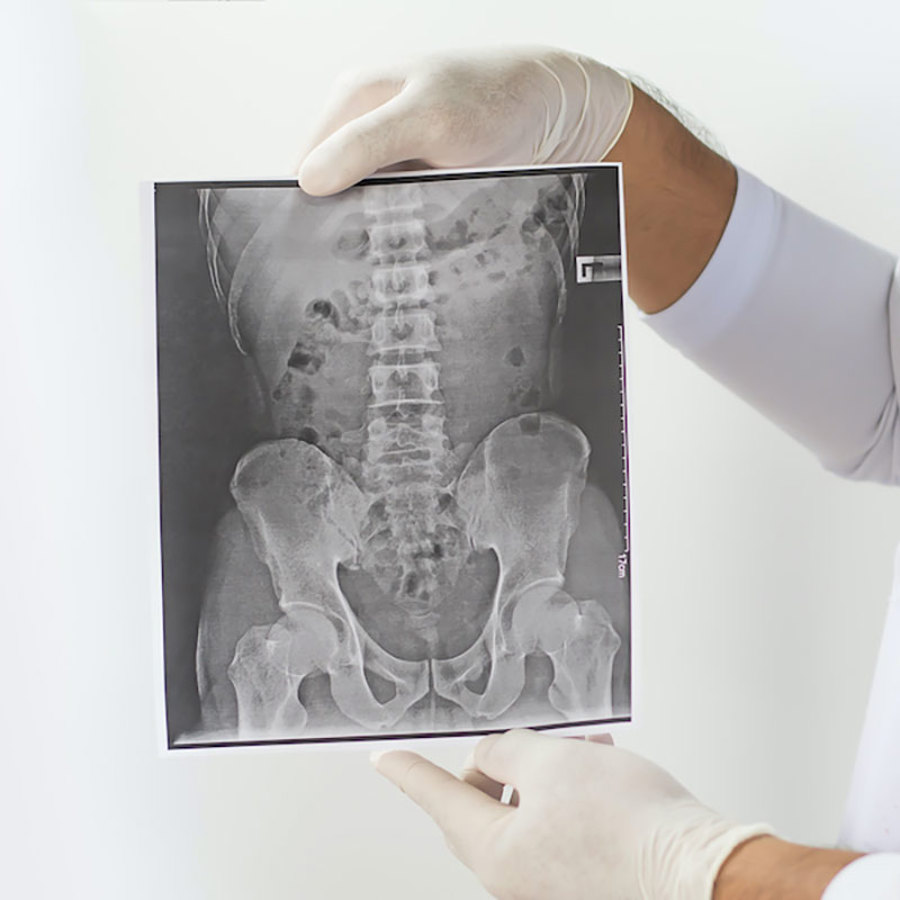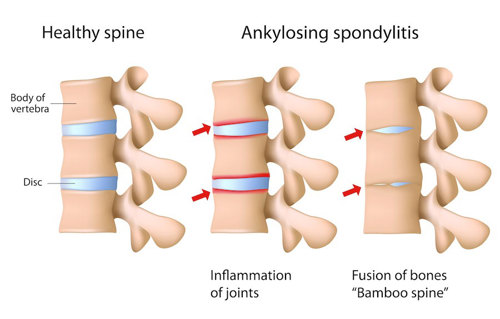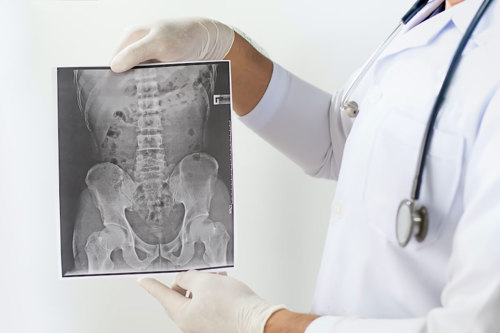
What are the chances that I have ankylosing spondylitis?
December 10, 2004

- Related Topics:
- Medical genetics,
- Autoimmune disease,
- Complex traits
A curious adult from New Mexico asks:
“My father had ankylosing spondylitis. I am 53 years old and have scoliosis and some back pain. Recently I had SI joint X-rays that were normal. What are the odds of me having ankylosing spondylitis?”
To get a definitive answer as to whether you have a disease, you should always talk to your doctor. That being said, when ankylosing spondylitis (AS) runs in your family, the chances of you having AS are about 20% if you're under age 40 and very low if you’re over 40. X-rays are the most accurate way to diagnose AS because having the gene for AS does not necessarily mean that you'll have the disease. People who are over 40 with normal x-rays have a very low risk of developing AS.
I can see why you’d be worried about AS, since people with the condition have episodes of back pain, back stiffness, loss of motion and deformity.
AS belongs to a family of diseases called spondylathropies that attack the spine. AS causes arthritis of the spine and the joint that connects the spine to the pelvis (the sacroiliac or SI joint). It can also cause inflammation of the eyes, lungs, and heart valves.
What causes AS?
Unlike some other diseases, AS isn’t caused by having a broken gene – instead, it’s caused by having a certain version of an immune system gene. But don't we all have the same genes? Not when it comes to genes involved with our immune system.
Our immune system is designed to attack foreign invaders while leaving our own cells alone. The immune system can which cells are its own by a “code” on the surface of all of its cells. Foreign cells do not have the right code and so are attacked.

The code is made up of a unique set of proteins on the surface of our cells. Each protein is made from a different gene. Everyone has a different set of genes to create this code*.
The gene associated with AS makes one of the proteins that create this code, HLA-B27. No one really understands why this protein seems to cause AS but it may have to do with the fact that it looks a bit like a protein from the bacteria in our intestines.
It may be that our immune system confuses its own code with that of the bacteria’s and so ends up attacking itself. We call this sort of condition an autoimmune disease. With autoimmune diseases, the body's immune system gets confused and thinks some part of itself is a foreign invader. The immune system then attacks and tries to destroy that part of the body.
This may be what is happening in AS. The body is confused and attacks the SI joint causing inflammation and pain.
Who has the HLA-B27 gene?
The HLA-B27 gene is found in 8% of the Caucasian population. Only about 2% of people born with HLA-B27 will get AS. This is because the protein made by HLA-B27 works with other proteins to cause the disease in ways that we don't understand.

If your father has one copy of the gene for AS (as is typical for HLA genes), then your chances of having the gene are 50%, because you get half of his genetic information. If your dad had two copies, your chances are 100%. If a physician suspects that you have AS, you can be tested for HLA-B27. If you don't have the gene you most likely won’t get AS. If you do have the gene, however, the disease can't be diagnosed because only 2% of people with HLA-B27 get AS.
The best test for AS is an x-ray of the sacroiliac (SI) joint. An x-ray that shows inflammation over time is a strong sign of AS. Another test for AS is ultrasonography, which can find early inflammation in the joints.
Genetics is extremely powerful in understanding and predicting disease, but this is an example where the medical test is still the best until we completely understand the genetics.
* The code of proteins decorating our cells is also important in tissue transplants. Before a tissue is transplanted a genetic test is used to see how similar the codes are between the tissue and the person receiving the tissue. If they are too different, the tissue transplanted will be treated as invading cells. The tissue will be attacked by the immune system and finally be rejected.

Author: Flo Pauli
When this answer was published in 2004, Flo was a Ph.D. candidate in the Department of Genetics, studying tissue-specific gene expression in c. elegans in Stuart Kim’s laboratory. Flo wrote this answer while participating in the Stanford at The Tech program.
 Skip Navigation
Skip Navigation
